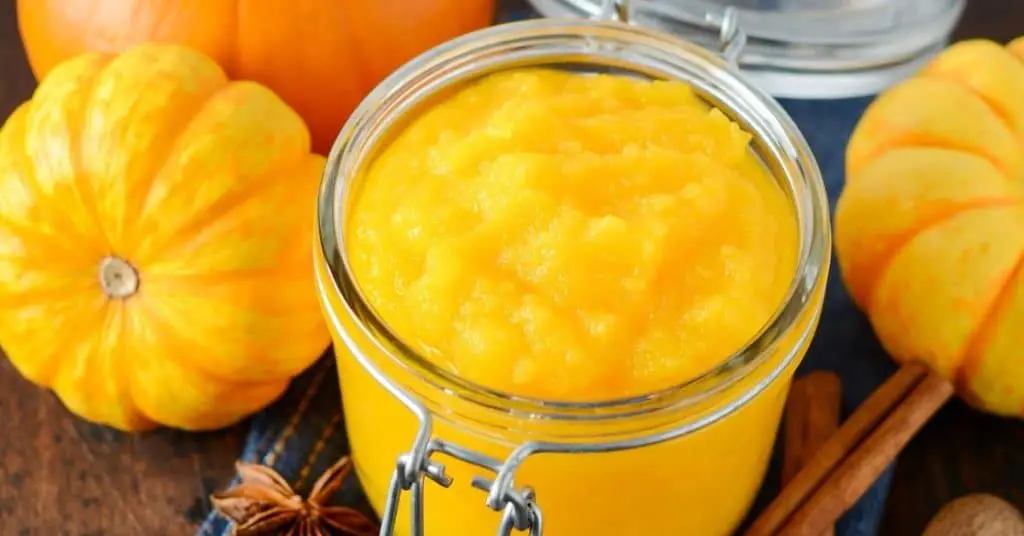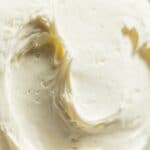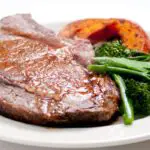Briefly, yes, both homemade and canned pumpkin puree can be frozen to extend its shelf life. When freezing, ensure it’s properly protected from air and moisture to maintain its flavor and texture.
Pumpkin purée is a prime example of just how versatile vegetables can be. Whether homemade or canned, pumpkin puree is used in sweet and savory applications and is especially popular during the fall and winter holiday season.
Pumpkin puree is used in many favorite holiday recipes, and that means that you often have some leftovers. Luckily, your leftover pumpkin puree can be frozen to extend its shelf life and you don’t have to see any go to waste.
Here is everything you need to know to successfully freeze pumpkin puree.
Can Pumpkin Puree Be Frozen?
Yes, both homemade and canned pumpkin puree can be frozen to extend its shelf life.
When freezing pumpkin purée, it is important to keep it protected from contact with air and moisture as this may cause freezer burn which will influence the flavor and texture of the puree when thawed.
How To Freeze Pumpkin Puree
Below are two methods you can use to freeze pumpkin puree. The best way will depend on how you plan to use the puree later.
Method 1: Small Portions
Step 1: Cool
If the pureed pumpkin is warm from cooking, let it cool completely to room temperature before preparing to freeze.
Step 2: Portion
To freeze small portions of puree, an ice cube tray or muffin tin is ideal. It is preferable to use silicone molds as opposed to hard plastic ice cube trays or metal muffin tins to prevent sticking and color staining.
If you don’t have silicone molds, line each muffin compartment with a layer of cling film. Leave the edges to stick out at the top. This way, when frozen, you can simply pull out the plastic to prevent sticking.
Scoop the puree into the compartments and cover the top with another layer of clingfilm. This protects the puree from contact with air and moisture and helps prevent freezer burn.
Step 3: Pre-freeze
Place the ice cube tray or muffin tin in the freezer for several hours, just until the puree is fully frozen. Once they freeze solid, remove the tray from the freezer.
Step 4: Bag it
Remove the frozen cubes or pumpkin pucks from the ice cube tray or muffin tin and pack them into a zip top bag. Press out any excess air from the bag before sealing. The less contact the puree has with air during storage, the better the quality will remain.
Step 5: Label and Freeze
Label the freezer bag with the contents and date so that you can keep track of how long it has been stored and place it in the freezer.
Method 2: Larger Portions
Step 1: Cool
If the pumpkin puree is warm from cooking, let it cool down completely to room temperature before preparing to freeze.
Step 2: Pack
To freeze larger amounts of puree, place the pumpkin puree into resealable freezer bags. Press out all the air at the top of the bag and seal.
Step 3: Label
Label the bag with the contents and date so that you can keep track of how long it has been stored.
Step 4: Freeze
Freeze the bags flat on a baking tray. Remove the baking sheet once the packs are frozen. The flat frozen packs of puree make for easy and tidy stacking in the freezer, allows them to freeze evenly, and thaw quicker.
Keep in mind that when freezing large batches, you will have to thaw the entire pack at one time and use it within a couple of days.
How To Thaw Frozen Pumpkin Puree
To defrost pumpkin puree, place the bag of puree in the fridge overnight. Alternatively, put the sealed bag in a water bath or use the defrost setting on the microwave.
Defrosted puree, especially the homemade type, may form a watery layer on top once thawed. Simply give it a good stir to mix the liquid back into the puree or pour it off.
If you find the puree to be on the watery side, reduce the quantity of other additional liquids in the recipe you are using the puree for by 2 to 3 tablespoons.
Types of Pumpkin Puree
Pumpkin puree is cooked pumpkin flesh, blended or mashed into a smooth pulp. The pumpkin can be cooked by roasting, baking, steaming, or boiling before being turned into a puree. When making homemade pumpkin puree, the method of cooking will influence the flavor as well as the density of the puree.
Roasting pumpkin, for example, uses a higher heat, reduces the moisture content, and has a caramelization effect on the naturally occurring sugars in the pumpkin.
The variety of pumpkin used will also affect the color, flavor, and texture of the puree. Big pumpkins generally containing more moisture, a stringier texture, and have a less intense flavor. Pie pumpkins are generally smaller and more dense than those used for decorating and making Jack-o-lanterns.
Buying ready-made canned pumpkin puree is an easy alternative to having to peel, cook, and blend your own veggies. Some brands may include artificial flavoring and preservatives to extend the shelf life of the canned product.
There are so many delicious pumpkin puree recipes from pumpkin bread and pumpkin soup, to muffins, cookies, cake, stew, and of course pumpkin pie filling.
Pumpkin pie filling is often confused with plain pumpkin puree. It is, however, different from canned pumpkin puree as it has already been flavored with spices and has been sweetened prior to canning.
FAQs
Conclusion
Don’t underestimate this simple ingredient. If its pumpkin season and you’ve had your fill, get your pumpkin leftovers together, puree, and freeze. Even canned pumpkin puree is great for pasta, muffins, bread, frosting, ice cream, pancakes, cupcakes, and morning oatmeal with brown sugar and pumpkin spice.
Freezing pumpkin puree in larger quantities is suitable for use in soups, casseroles, and batters, while freezing it in ice blocks is great for adding to smoothies and sauces. Easy to freeze and quick to thaw, there is no reason to let any of your leftover pumpkin puree go to waste.
Up next: Can You Freeze Pumpkin Pie?
*image by JulijaDM/depositphotos









